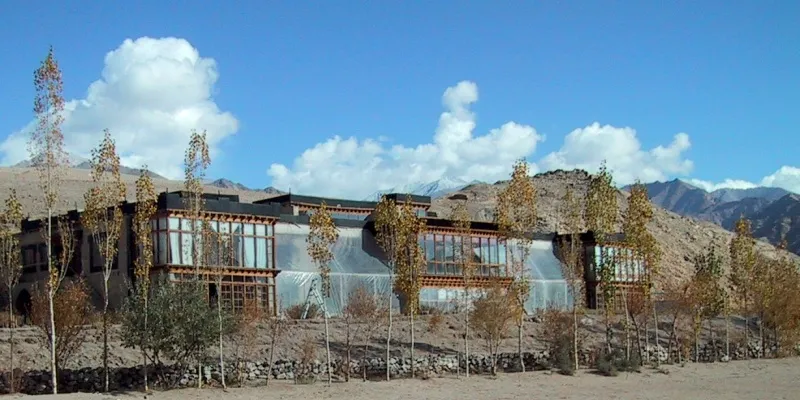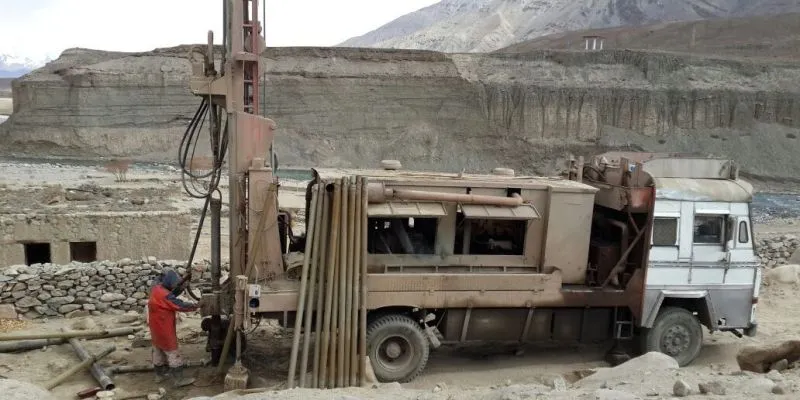Sustainably-run SECMOL plans solar borewell for overcoming water woes in Ladakh
This article has been contributed by Milaap.org as a part of the fund raising campaign for SECMOL.
In 1988, Sonam Wangchuk and a group of Ladakhi youth founded the Students’ Educational and Cultural Movement of Ladakh (SECMOL). The idea was to reform the educational system, re-engage Ladakhi students, and help them complete their education. Over time, their activities would become the spark that would rekindle interest in the dying ecosystem of Ladakh, and fetch awards from CNN IBN and the Ashoka Fellowship. Their story would inspire the character in a movie about youth (Aamir Khan in Three Idiots) to follow his dreamsby going off the beaten path.
Watch the video to see Sonam Wangchuk explain what motivates SECMOL’s sustainable approach to sanitation, food cultivation, and solar power adoption.
Over the past decade, picturesque Ladakh has been greatly impacted by global warming and the exponential rise in tourism. Rare plants and birds from the region are facing extinction. Plastic waste litters the landscape and clogs the streams. Vehicular and fuel emissions pollute the air – it may not be evident to the average city tourist, but the locals see it. Rural Ladakhi society relies on its water supply from streams replenished by melting glaciers. But global warming has reduced this glacial melt at an alarmingly swift rate. Their reduced water supply is further polluted by the newly sprung tourist hotels.
You might also like:
Documentarian Takes A Motorcycle Journey To Experience Life In Ladakh
7 ordinary Indians who will make you proud
Traditionally, Ladakhis have always used water management and sanitation systems that are in harmony with nature. Their dry compost toilets eliminate the need for drains, sewers, and water wastage. But tourist hotels have flush toilets that empty their sewage waste into the very streams that provide water to the locals. Summer brings a huge influx of tourists and money. Along with diseases like cholera and diarrhea caused by the sewage waste that flows into the streams.

Amidst this deterioration, SECMOL’s Phey campus, 18 kilometers from Leh is a small beginning that promotes a sustainable lifestyle in harmony with nature. Developed over five years (from 1994 to 1999), it has transformed a desert area into a lush oasis with 1000 odd trees, gardens, and animals. Forty students, a few volunteers, and some staff live there. Everyone on campus chips in to run the place. An extra 100 people can reside in the building when SECMOL conducts trainings, workshops,and youth camps.
The campus buildings are built using low-cost local materials and techniques: rammed earth and arched windows minimised the use of costly imported wood. Their traditional Ladakhi-style dry composting toilets do not need flushes. The composted waste provides manure for vegetable gardens and trees.
The campus buildings are heated by their passive solar design. Bathing blocks have solar heated water and cooking is done using solar cookers, which eliminate fuel and related emissions. In winter, the buildings are draped in plastic and create green-houses for the vegetable gardens that grow produce even in winter. A solar electric system provides year-round electricity for lights, TV, computers, and tools.
However, a major challenge faced by the campus is its water supply during the summer months. For years, their water supply has beensourced from the Indus River using a solar-powered pump. But in recent years, the polluted summer waters that flow into the river also get pumped in and transmit diseases. Treating this contaminated water increases the costs and energy consumption borne by the campus.
This summer, SECMOL plans to solve their problem by installing an innovative solar-powered borewell that will provide them with clean drinking water all year round. The project costing Rs. 400’000 has to be completed before June this year. While they haven’t yet raised the funds for the project, a driller known to SECMOL and working on credit, started drilling for water in March. The team finally found water after drilling 130 feet deep. The borewell was dug in the first week of April.

Now all that remains is to rally the funds so SECMOL can pay the driller, build, and install the solar borewell. Impressed by SECMOL’s continued commitment to sustainability, the Ochre Hearts Foundation is running a crowdfunding campaign on Milaap.org to raise the funds for them.This project is a sustainable and eco-friendly solution to SECMOL’s water woes. At stake is their safeguard against diseases, their year-round water supply, and a more visible success that could be used to promote a return to sustainable living among both rural and commercial Ladakhi society.
Read more about Milaap campaings on YourStory:
Saliah, India’s visually impaired chess champion, can teach you a few things about dreaming with open eyes
How 3 women entrepreneurs from rural India are creating opportunities for others







